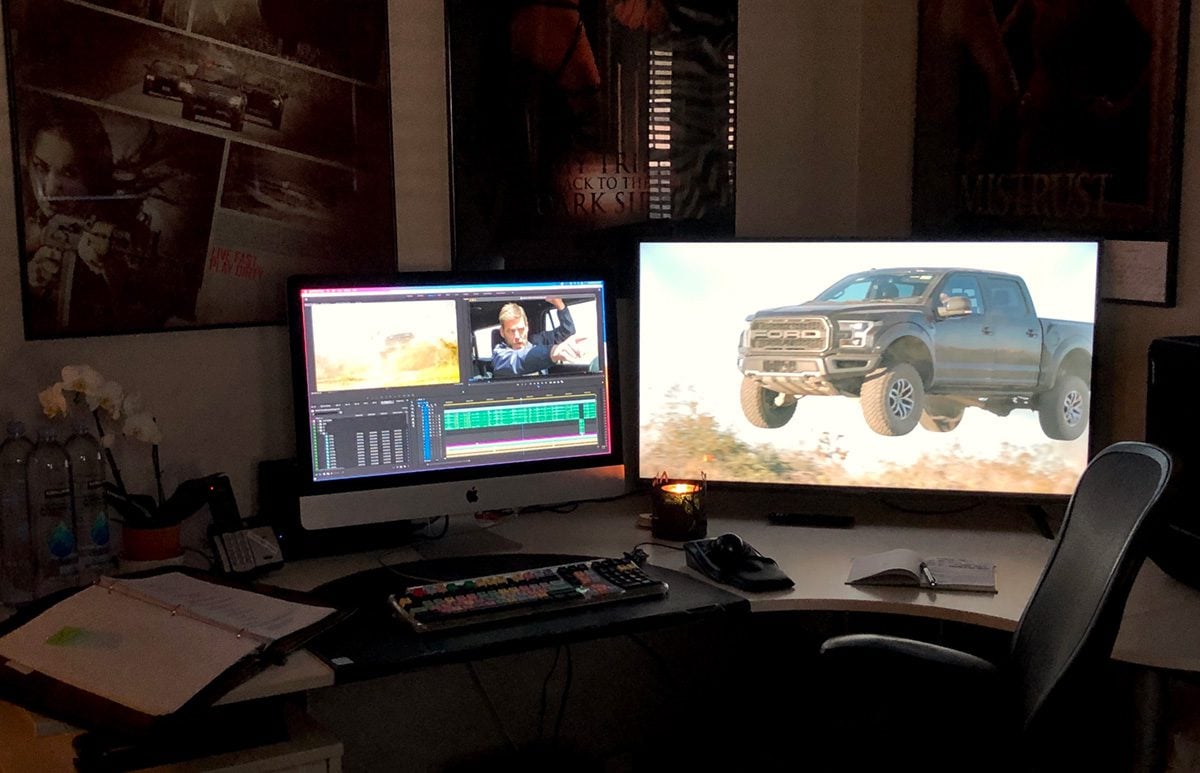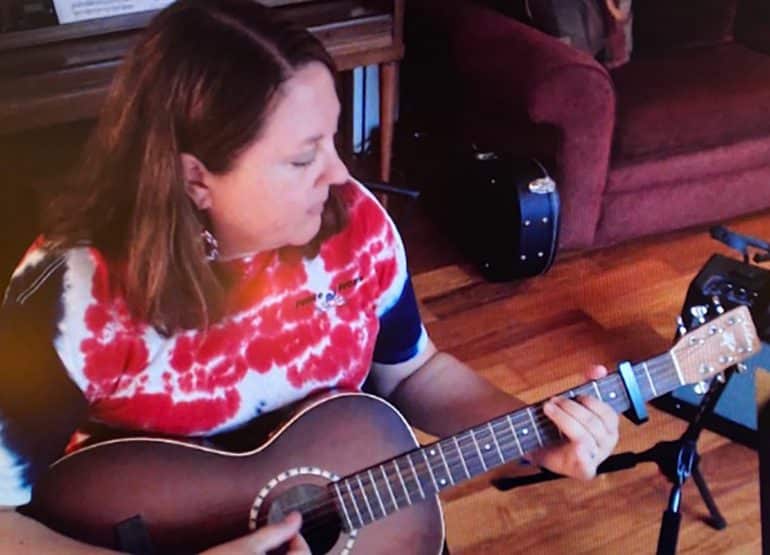Pictured above: Shane Stanley’s edit bay.
How to Set Up Your Edit Workstation:
3 Important Things
Written by Shane Stanley
When I prepare to edit my films there’s a great deal of excitement, but it’s also met with some opposition. Why? Because it means I’ll be isolated in a small, dark room for several months while addressing everything that didn’t go ‘as planned’ during production. Shaping countless hours of footage into a smooth-running and entertaining motion picture can be grueling and flat out overwhelming, but I have found a few ways to make this process less painstaking and even pleasant.
The most important thing is your project setup. How you organize the footage and miscellaneous files are key so you’re not wasting precious time (or brain space) searching for clips. When shooting, not always will things be slated properly and even worse, the more we run-and-gun, the more scattered and unorganized footage can become. Take the time before you begin cutting to get organized and put everything where you can access it quickly, so once you’re in the groove, you’re not being hindered by spinning your wheels unnecessarily. Assembling a ninety-minute feature is a huge task, but if you set up the project correctly, it is so much easier.
Another crucial element is your work environment. I get many of you don’t have a traditional edit bay or offices, and that’s okay. I prefer to edit from my home office, which when I’m not in post-production, doubles as storage for equipment and used as a traditional home office. But when it’s time to edit, clear everything you can out and create as much open and breathable space as possible. Don’t load your workstation with crap that will distract you or worse, paperwork from other pressing responsibilities – especially monthly bills. They will hinder your creativity and cause unnecessary pressure without even realizing it. You can’t be creative when you’re feeling claustrophobic. The only things you should have in sight are a copy of the screenplay, any script notes, a shooting schedule to cross reference footage if you’re having trouble finding it, and a scratch pad for making notes. Keep your phone out of eyeline, and I challenge you to turn off the audible alerts. You’re a filmmaker now, and this is your career path. Social media and constant interruptions that won’t help you achieve your goals can wait.
Ambiance is key. Personally, I like a blacked-out room with warm, soft light accompanied by some calming candles, and free from any outside noise. You need to be in the moment, and if you don’t live alone, it’s imperative the people you live with understand and respect the creative process. When I cut, I often lose track of time. Several hours can pass without realizing it, so it’s important to set reminders to get up and stretch your legs, (you can check your texts messages then), stay well hydrated and remember to break mid-way through the day to eat well. Don’t forget – garbage in, garbage out, and if you don’t eat or worse, you fill your body with junk, the results will show in your work.
Until next time…






